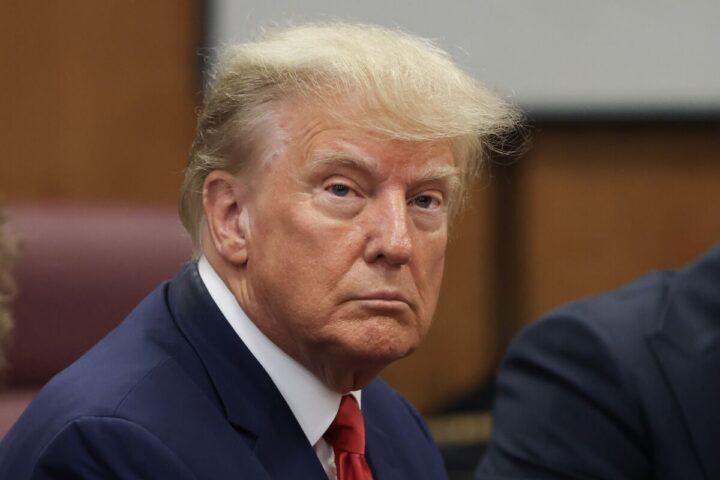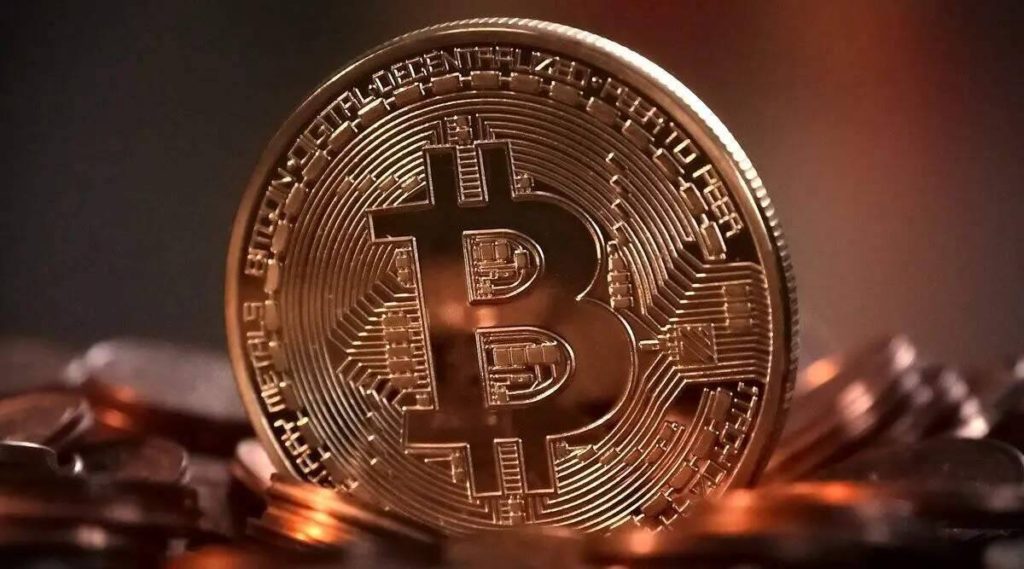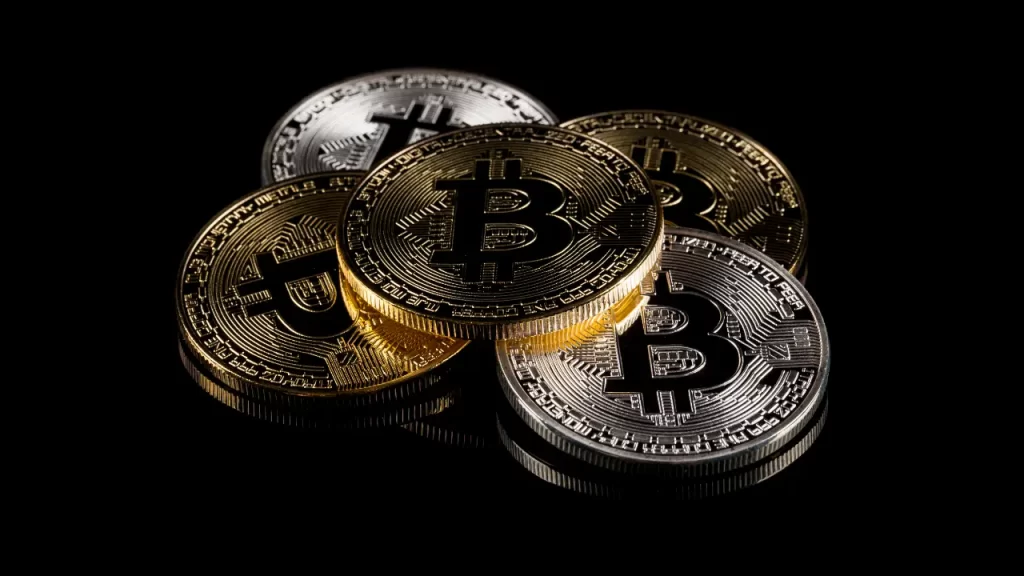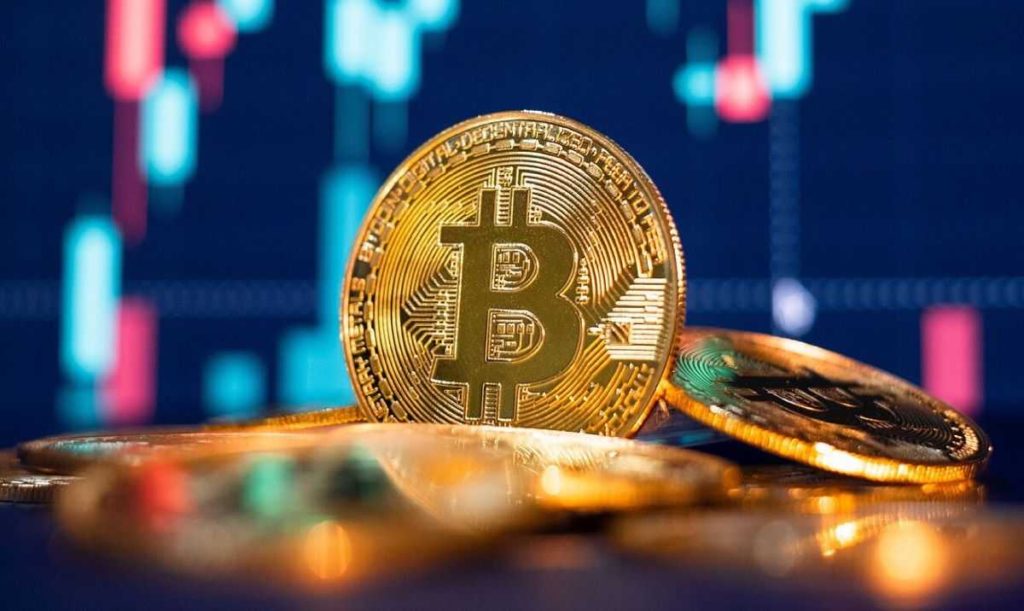Argentinian police have made a grisly discovery in the case of a missing cryptocurrency millionaire and Instagram influencer, Fernando Pérez Algaba.
The crypto trader was reported missing on July 18 after failing to return the keys to a rented apartment and not responding to phone calls.
Tragically, his remains were found dismembered in a suitcase less than a week later, on July 23, by children in Ingeniero Budge, a province near Buenos Aires.
Authorities found amputated legs and forearms in the suitcase and later discovered a torso on July 24 after draining the nearby stream.
On July 25, they found his head in a backpack. Fingerprints and tattoos confirmed the identity of the victim, and an autopsy indicated that Algaba had been shot three times before being dismembered.
Investigators believe that the murder may have been carried out by a professional group, and they suspect the motive could be debt-related.
Already, one suspect has been arrested in connection to the case.
READ MORE: KuCoin Denies Layoff Rumors Amidst Crypto Industry Stabilization
Fernando Pérez Algaba was well-known in the crypto trading community in Buenos Aires, where he ran an office with 25 other traders.
Additionally, he had gained considerable fame on Instagram, boasting over 917,000 followers. His posts typically featured luxury cars and his beloved dog.
Reports suggest that Algaba had significant debts, including 900,000 Argentine pesos ($3,300) in bounced checks, 1.2 million Argentine pesos ($4,400) owed to banks, and another debt of $70,000 related to a bounced check.
This tragedy occurred amidst a series of mysterious and sudden deaths of other crypto billionaires between October and December 2022.
Individuals such as MakerDAO co-founder Nikolai Mushegian, crypto broker Javier Biosca, Amber Group co-founder Tiantian Kullander,
Russian crypto billionaire Vyacheslav Taran, and major Bithumb shareholder Park Mo all suffered untimely demises during this period, sparking wild theories within the crypto community.
As the investigation into Algaba’s death continues, his friends, family, and followers mourn the loss of a prominent figure in the crypto and social media world.
The incident serves as a grim reminder of the potential dangers and risks that can accompany wealth and fame in the digital age.
Other Stories:
Best Crypto Projects to Invest in For The Next Bull Run
Ripple’s Chief Legal Officer Dismisses Concerns of SEC Appeal, Predicts Further Victory
Tennessee Realtor Couple Charged in $6M ‘Blessings of God Thru Crypto’ Investment Fraud
Crypto.com has been granted approval by the Dutch central bank, De Nederlandsche Bank (DNB), to provide cryptocurrency services in the Netherlands.
The exchange has successfully registered as a cryptocurrency service provider after undergoing a thorough review of its business operations and compliance with the country’s Anti-Money Laundering and counter-financing of terrorism requirements.
At present, there are 36 cryptocurrency-related businesses registered with the DNB, which include prominent players like Coinbase Europe, eToro, and Bitstamp.
Tobias Oudejans, the DNB press officer responsible for supervision, fintech, cryptocurrencies, resolution, and payment systems, shared insights on the matter with Cointelegraph.
Due to legal obligations tied to supervisory laws, he refrained from commenting on specific registrations.
It’s crucial to note that the registration obtained by Crypto.com specifically permits the company to offer cryptocurrency wallets to customers and facilitate the processing of fiat currency on cryptocurrency exchanges.
This move ensures that the company’s services are in compliance with the country’s regulations.
It is worth mentioning that even before the registration announcement, Crypto.com’s services were already accessible to users in the Netherlands. Oudejans clarified that Dutch residents are legally allowed to sign up for the company’s services.
READ MORE: KuCoin Denies Layoff Rumors Amidst Crypto Industry Stabilization
However, any unregistered company soliciting or advertising its cryptocurrency services to Dutch users would be considered operating illegally.
In contrast, Binance, another major cryptocurrency exchange, faced challenges in obtaining approval from the DNB.
As a result, Binance made the decision to forgo further efforts to register as a cryptocurrency service provider in the Netherlands and ceased its operations within the jurisdiction.
With the green light from the Dutch central bank, Crypto.com is set to expand its presence and offerings in the Netherlands, providing Dutch users with a legally compliant platform for cryptocurrency transactions and services.
As the cryptocurrency industry continues to evolve, regulatory compliance is becoming increasingly important for businesses seeking to operate in various countries and jurisdictions.
Other Stories:
Ripple’s Chief Legal Officer Dismisses Concerns of SEC Appeal, Predicts Further Victory
Best Crypto Projects to Invest in For The Next Bull Run
Tennessee Realtor Couple Charged in $6M ‘Blessings of God Thru Crypto’ Investment Fraud
Phoenix Technology, a leading crypto mining hardware provider, is reportedly in discussions to launch an initial public offering (IPO) in the United Arab Emirates (UAE), as per Bloomberg’s anonymous sources.
While the specifics of the IPO are yet to be finalized, the company is known for its development of one of the largest mining facilities in the Middle East.
Additionally, it holds distribution rights for various tech hardware manufacturers across the Middle East, Africa, and Türkiye. Cointelegraph reached out to Phoenix Technology for a comment, but no immediate response was received.
The UAE has emerged as one of the most crypto-friendly jurisdictions worldwide, striving to establish regulatory clarity through its crypto-dedicated regulator, the Dubai Virtual Asset Regulatory Authority (VARA).
Moreover, the emirate of Ras Al Khaimah (RAK) has established a crypto-focused free trade zone called the RAK Digital Assets Oasis, also known as RAK DAO.
In an effort to further solidify its position in the sector, the UAE approved the virtual assets law and established the Dubai Virtual Assets Regulatory Authority, aiming to ensure transparency and security for investors through collaboration with relevant entities.
Crypto players operating in the UAE have expressed their preference for the country’s business-friendly infrastructure over that of the United States.
READ MORE: KuCoin Denies Layoff Rumors Amidst Crypto Industry Stabilization
Saqr Ereiqat, an executive at Crypto Oasis, highlighted in a previous Cointelegraph interview that the regulatory frameworks in the UAE are more streamlined compared to the fragmented regulatory environment in the US.
Despite its crypto-friendly stance, the UAE’s regulators are stringent regarding compliance with requirements and deadlines.
This was evident when the Dubai Virtual Asset Regulatory Authority suspended the license of BitOasis, one of the country’s largest local exchanges, and the first to obtain an operating license in Dubai.
The suspension was due to BitOasis’s failure to meet the deadlines for submitting the required documents as mandated by the regulator.
In summary, Phoenix Technology is exploring the possibility of launching an IPO in the UAE, a jurisdiction known for its friendly approach to crypto businesses.
However, despite this friendliness, the UAE’s crypto regulators are strict when it comes to compliance, as demonstrated by the recent suspension of BitOasis’s license.
Other Stories:
Tennessee Realtor Couple Charged in $6M ‘Blessings of God Thru Crypto’ Investment Fraud
Ripple’s Chief Legal Officer Dismisses Concerns of SEC Appeal, Predicts Further Victory
Bitcoin (BTC) experienced a pullback on July 27, erasing the gains from the previous day, while macroeconomic data in the United States had a muted effect on the cryptocurrency’s price.
After reaching a brief peak of $29,680 just before the daily close, BTC’s strength started to fade, even though the Federal Reserve had already raised interest rates to their highest level since 2001, which had been anticipated by the markets.
On the same day, the U.S. gross domestic product (GDP) for Q2 exceeded expectations, growing at an annualized rate of 2.4%.
This result suggested that inflationary pressures were still subsiding, potentially benefiting risk asset performance.
Surprisingly, Bitcoin did not show a noticeable reaction to this positive economic data, and stocks remained fairly flat after the Wall Street open.
Michaël van de Poppe, the founder and CEO of trading firm Eight, expressed hope that the release of the July 28 Personal Consumption Expenditures (PCE) Index would provide a more concrete growth incentive.
He believed that a better-than-expected PCE could drive the markets higher.
READ MORE: Best Crypto Projects to Invest in For The Next Bull Run
However, van de Poppe also cautioned that BTC/USD might experience a dip before any potential upward movement, with the critical support level now identified at $29,700.
On-chain monitoring resource Material Indicators had previously suggested that the GDP report would have little impact on the cryptocurrency market, labeling it a “nothingburger” for crypto.
An analysis of the BTC/USD order book on Binance indicated that there was thin support above $28,500, which could ease a market drop if one were to occur.
While the GDP data had little effect on market expectations for the next interest rate decision in September, the U.S. dollar strengthened to two-week highs on July 27.
The U.S. Dollar Index (DXY) reached 101.84, bouncing back from its lowest levels in over a year.
Financial commentator Tedtalksmacro noted that the rate hike event was rather unremarkable, as the markets were reacting as if it were just a step closer to a potential pause in rate hikes, leading to higher prices for both BTC and U.S. equities.
In conclusion, Bitcoin’s price showed some weakness despite positive macroeconomic data from the U.S., and the U.S. dollar strengthened on the same day.
Market participants were keeping a close eye on the upcoming PCE Index release to assess its impact on asset performance.
Other Stories :
Ripple’s Chief Legal Officer Dismisses Concerns of SEC Appeal, Predicts Further Victory
KuCoin Denies Layoff Rumors Amidst Crypto Industry Stabilization
Tennessee Realtor Couple Charged in $6M ‘Blessings of God Thru Crypto’ Investment Fraud
Grayscale, a leading crypto fund manager, has called on the U.S. Securities and Exchange Commission (SEC) to approve all pending spot Bitcoin ETFs simultaneously, arguing that selective approval would grant an unfair advantage to certain proposals.
The request, articulated in a letter submitted by Grayscale’s Chief Legal Officer, Craig Salm, included their own application among the eight filings.
The letter proposed that the SEC could approve the spot ETFs based on precedents set for Bitcoin futures ETFs, as these fund types are closely linked.
Grayscale also refuted the SEC’s requirement for surveillance sharing agreements (SSAs) between the ETF providers and Coinbase, a leading crypto exchange, which aims to prevent market manipulation.
Recently, ETF filings from top financial companies, including Invesco, BlackRock, Valkyrie, VanEck, Wisdom, Fidelity, and ARK Invest, were updated to incorporate SSAs with Coinbase.
The SEC, in turn, had delayed the ETFs’ approval in June citing the absence of such agreements.
READ MORE: Best Crypto Projects to Invest in For The Next Bull Run
However, Grayscale contends that these SSAs are not requisite or sufficient under SEC standards as Coinbase is not a registered securities exchange, broker-dealer, or futures exchange.
Grayscale emphasized that the approval of the ETFs would mark a considerable but positive shift in the SEC’s standard application, warning against any discriminatory ‘first-mover’ benefits to certain proposals.
The firm’s Grayscale Bitcoin Trust (GBTC) currently has close to a million investors, tracking Bitcoin’s price.
Conversion to an ETF could yield billions in investor value, making Grayscale question the SEC’s rationale in withholding GBTC investors from a spot Bitcoin ETF.
The SEC rejected Grayscale’s application to convert the GBTC into a spot Bitcoin ETF last June, leading to a lawsuit by Grayscale against the regulator.
Grayscale accuses the SEC of inconsistency in handling similar investment vehicles, considering it an arbitrary act.
Other Stories:
KuCoin Denies Layoff Rumors Amidst Crypto Industry Stabilization
Tennessee Realtor Couple Charged in $6M ‘Blessings of God Thru Crypto’ Investment Fraud
Ripple’s Chief Legal Officer Dismisses Concerns of SEC Appeal, Predicts Further Victory
Bitcoin (BTC) faced the threat of further declines over the weekend as the July 23 candle close approached.
The cryptocurrency was trading below $30,000, which had now become an intraday resistance level, according to data from Cointelegraph Markets Pro and TradingView.
On July 22, BTC briefly dipped to $29,640 before recovering by the daily close, but traders remained concerned about the possibility of more downside movement. Crypto Tony, a popular trader, warned his Twitter followers about a double top rejection on the BTC chart and highlighted two critical psychological levels to watch out for – $25,000 and $20,000.
Another trader and analyst, Nebraskan Gooner, concurred with the idea of further downward price action for BTC, pointing out that it had fallen below the narrow range that had been in play for the past month.
As for the future direction of Bitcoin’s price, some traders were waiting for increased market volatility, but they were hesitant to predict whether it would break out or break down to test earlier-year levels.
Toni Ghinea, a well-known trader and analyst, anticipated a decisive move in the recent narrow price range in the coming week.
READ MORE: Report Reveals Alarming Surge in Cryptocurrency Use by ISIS Terrorists
He identified $31,000 to $32,000 as a resistance area and $29,000 as a support level, advising caution if a break above the resistance occurs.
Ghinea warned against becoming overly optimistic in such a scenario as it could still be near the range high.
Conversely, a potential decline could see BTC testing the 27,000 to 28,000 range, with the $19,000 to $23,000 zone still being a possibility.
Amidst these technical considerations, market participants were bracing for a crucial week with the Federal Open Market Committee (FOMC) meeting on the horizon.
The FOMC, responsible for setting interest rates in the United States, could provide significant volatility indicators as it makes decisions on monetary policy.
Market sentiment leaned heavily toward predicting a return to rate hikes, with odds standing at 99.2% as of July 23, according to CME Group’s FedWatch Tool.
Overall, Bitcoin’s price remained under pressure as traders closely monitored key levels and events that could influence the cryptocurrency’s trajectory in the near future.
Other Stories:
Controversial Proposal Sparks Fierce Debate Among Members of Solana-Based Liquidity Network
Terraform Labs Faces Uphill Battle Amidst Allegations, New CEO Discusses Road Ahead
In a remarkable turn of events, a dormant Bitcoin (BTC) wallet that had remained untouched for 11 years has suddenly come to life, transferring its entire stash of over 1,037 Bitcoin. At current market prices, this amounts to a staggering $31 million worth of BTC.
The transfer occurred at a Bitcoin price of $29,956 and took place at block height 799701, around 10:51 am UTC on July 22, as reported by BitInfoCharts. According to on-chain analytics platform Lookonchain, this long-dormant address had acquired the 1,037 BTC back on April 11, 2012, when the price of Bitcoin was just $4.92, valuing the stash at a modest $5,108 at the time.
The recipient of this massive transfer appears to be a fresh wallet address identified as “bc1qt180…,” which now holds the considerable sum of $31 million in BTC, according to data from blockchain aggregator Blockchair.
Notably, the original Bitcoin wallet that initiated the transfer had previously peaked in value at $71.6 million when Bitcoin reached its all-time high price of $69,044 on November 10, as per cryptocurrency price platform CoinGecko.
Interestingly, the United States government has also been involved in significant BTC transactions. Just ten days before this particular transfer, the U.S. government transferred nearly 10,000 BTC, equivalent to $299 million, in relation to the Silk Road seizure.
However, it remains unclear whether these funds were sent to cryptocurrency exchanges or remain under the custody of the Justice Department.
READ MORE: Report Reveals Alarming Surge in Cryptocurrency Use by ISIS Terrorists
This event adds to a list of other enigmatic wallet movements that have taken place recently. On June 11, a mysterious Bitcoin whale moved 1,400 BTC worth $36 million at the time, opting for a Pay-to-Taproot address, potentially to enhance privacy, according to CryptoQuant CEO Ki Young Ju.
In April, another intriguing Bitcoin address transferred 2,071 BTC, valued at $60 million, almost a decade after acquiring them at a price of $663, again reported by Lookonchain.
Despite these high-value transfers, an impressive 55% of BTC has not moved in over two years, as shown in a chart by on-chain analytics firm Glassnode, which was shared by cryptocurrency researcher Will Clemente.
As of now, BTC is priced at $30,082. Although the cryptocurrency has seen an 81.8% increase in 2023, it still remains 56.4% below its all-time high reached in November 2021, according to CoinGecko.
The market continues to be full of surprises as dormant wallets awake, governments engage in crypto movements, and investor behavior keeps evolving.
Other Stories:
2023 Ranking: 4 Best Crypto Projects To Buy
Terraform Labs Faces Uphill Battle Amidst Allegations, New CEO Discusses Road Ahead
Controversial Proposal Sparks Fierce Debate Among Members of Solana-Based Liquidity Network
The Bitcoin network recently reached a significant milestone by mining its 800,000th block, leaving just 40,000 blocks remaining until the next mining reward halving.
The 800,000th block contained 3,721 transactions, occupying 1.64 megabytes of data. Concurrently, the price of Bitcoin was trading at $29,815, a slight decrease from $29,162, as reported by market researcher Dylan LeClair on Twitter.
The achievement garnered considerable attention on social media, with Bitcoin enthusiasts and industry experts touting it as a testament to the network’s security and resilience.
In the context of blockchain technology, the term “block height” refers to a block’s position on the blockchain concerning the number of blocks that came before it, dating back to the network’s founding block, known as the genesis block.
Each block comprises bundled transactions and data, forming a chronological order that allows users to track the sequence of recorded transactions.
Block height also plays a crucial role in ensuring the immutability of the Bitcoin blockchain. As more blocks are added, the computational power required for a malicious actor to tamper with previous blocks significantly increases.
This helps prevent 50% attacks, where an attacker gains enough computing power to monopolize block generation, enabling them to reverse transactions and disrupt the network.
Moreover, block height affects the mining difficulty of the Bitcoin network.
READ MORE: Report Reveals Alarming Surge in Cryptocurrency Use by ISIS Terrorists
The mining difficulty is adjusted regularly based on the total computational power of the network and the time it takes to mine a specific number of previous blocks.
Since the network generates a new block approximately every 10 minutes, any changes in hashing power result in automatic adjustments to maintain equilibrium.
Furthermore, block height determines the rewards received by miners for adding a new block to the network. Bitcoin’s design includes a block-halving event roughly every four years or every 210,000 blocks.
Initially, the block reward was 50 BTC in 2009, which halved to 25 BTC in 2012, 12.5 BTC in 2016, and presently stands at 6.25 BTC since 2020.
The next halving event is anticipated to occur in April 2024, resulting in a reduced block reward of 3.125 BTC.
Past halving events have historically coincided with significant price rallies for Bitcoin and the broader cryptocurrency market.
As the countdown to the next halving event begins, macroeconomic factors have influenced the price of BTC, particularly following its all-time high of $69,000 in 2021.
Analysts and commentators have interpreted recent Bitcoin exchange-traded fund filings by global asset managers BlackRock and Fidelity as a sign of renewed institutional interest in Bitcoin.
These developments continue to shape the cryptocurrency’s trajectory as it moves closer to another crucial halving event.
Other Stories:
Controversial Proposal Sparks Fierce Debate Among Members of Solana-Based Liquidity Network
2023 Ranking: 4 Best Crypto Projects To Buy
Terraform Labs Faces Uphill Battle Amidst Allegations, New CEO Discusses Road Ahead
Bitcoin (BTC) has been struggling to break above the resistance at $31,000, but it has managed to maintain support at $29,500.
This suggests that the price needs a catalyst to break out of its current range.
The upcoming Federal Reserve meeting on July 25 and 26 is an important event to monitor.
There’s a high probability of a 25 basis point rate hike, which may not cause an immediate market reaction as it seems to have been priced in.
However, any unexpected move by the Fed could push the price of Bitcoin out of its range.
Analysts expect the range to break soon, but they are divided on the direction of the breakout.
A downside break could lead to a significant decline, with some projecting a fall to around $20,000.
On the positive side, if Bitcoin’s price moves higher, certain altcoins could attract buyers.
Now, let’s take a look at the charts of the top five cryptocurrencies that may turn positive in the coming days.
For Bitcoin, it remains below the 20-day exponential moving average ($30,036) but has support at the 50-day simple moving average ($28,979).
This indicates that the bulls are not giving up, and their repeated efforts to prevent a decline might attract buyers.
If the price breaks above the 20-day EMA, it could rally towards the resistance at $31,000 and even open the path for a potential rally to $40,000.
Conversely, a drop below the 50-day SMA may suggest a bearish comeback, leading to a slump towards the support at $24,800.
Next, Chainlink (LINK) has been trading in a range between $5.50 and $9.50, with bulls managing to keep the price within this range.
The current upward momentum, with both moving averages turning up and the RSI in positive territory, indicates that bulls are in control.
If buyers push the price above $8.80, the pair may soar towards $9.50. On the downside, a break below $7.05 might lead to a drop towards $6.50.
Filecoin (FIL) is attempting to form an inverse head and shoulders pattern, which will complete on a break and close above the neckline.
READ MORE: Controversial Proposal Sparks Fierce Debate Among Members of Solana-Based Liquidity Network
The moving averages sloping upwards and the RSI in positive territory indicate a potential upside.
If the price breaks above the neckline, the pair could rally to $6.50 and eventually target $7.30.
A sharp downturn from the neckline and a break below the 50-day SMA could indicate the bulls losing control, leading to a drop to $3.29.
Synthetix (SNX) is attempting to break out from a basing pattern, but it’s facing resistance between $3.40 and $3.56. The fact that buyers prevent dips below the 20-day EMA shows positive sentiment.
If they clear the overhead zone, the pair might rally to the next resistance at $4.50.
On the other hand, a dip below the 20-day EMA might drag the price to $2.19.
Finally, THETA (THETA) is facing selling pressure near the 38.2% Fibonacci retracement level of $0.83.
However, the bulls have managed to prevent the price from sustaining below the 20-day EMA, indicating positive sentiment.
Breaking and closing above $0.83 could lead to further gains towards $0.91 and $0.99. Conversely, a plunge below the moving averages might bring the price down to $0.66.
In conclusion, the cryptocurrency market is closely watching Bitcoin’s price movement and the outcome of the Federal Reserve’s meeting for potential catalysts.
Analysts remain uncertain about the direction of the breakout, but altcoins like Chainlink, Filecoin, Synthetix, and THETA show both positive and negative scenarios depending on specific chart levels.
Other Stories:
Terraform Labs Faces Uphill Battle Amidst Allegations, New CEO Discusses Road Ahead
2023 Ranking: 4 Best Crypto Projects To Buy
Report Reveals Alarming Surge in Cryptocurrency Use by ISIS Terrorists
Bitcoin (BTC) faced downward pressure over the weekend, and its ticker dipped to $29,906 as traders anticipated the July 23 candle close.
With BTC/USD acting below $30,000, this level became intraday resistance, and concerns grew among traders that further losses might be in store.
Prominent trader Crypto Tony analyzed the 3-day chart and observed a double top rejection, signaling potential further declines. He highlighted two critical psychological levels to watch, $25,000 and $20,000, in case of a drop.
Another trader, Nebraskan Gooner, shared the sentiment that downward price action was likely, as BTC/USD had fallen below the narrow range that had been in play for the past month.
However, traders were divided on whether Bitcoin would break out or break down to revisit previous price levels from earlier in the year.
Toni Ghinea, a popular trader and analyst, foresaw a decisive move for Bitcoin in the coming week. He identified $31,000-$32,000 as resistance and $29,000 as support, urging caution not to get carried away if there’s a break above the range high.
In the event of a significant drop, he pointed out the key area to watch at $27,000-$28,000, and if it holds, buyers should be prepared for a potential pullback. However, a further breakdown to the $19,000-$23,000 range remained a possibility.
READ MORE: SEC Contemplates Appeal Over Controversial XRP Ruling
Market analysis earlier noted the importance of various trend lines that acted as support and resistance for Bitcoin.
The following week was expected to be crucial for Bitcoin’s price action as markets reacted to macroeconomic policy cues.
The US Federal Reserve’s Federal Open Market Committee (FOMC) was scheduled to meet to decide on interest rates before the Bitcoin monthly close.
It was widely predicted that interest rates would return to a hike after a previous pause, with odds standing at 99.2% as of July 23, according to CME Group’s FedWatch Tool.
Overall, uncertainty loomed over the Bitcoin market, and traders were closely monitoring key levels and macroeconomic developments to gauge the cryptocurrency’s future direction.
Other Stories:
Nigerian Social Payments App Bundle Ceases Crypto Exchange Services
Bitcoin Laundering Couple Reach Plea Agreement with U.S. Authorities









